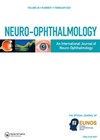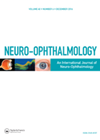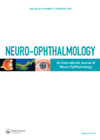
Journal Reviews
Did the COVID-19 pandemic affect quality of life of patients newly diagnosed with intra-cranial hypertension?
Coronavirus disease 2019 (COVID-19) was identified as a global pandemic by the World Health Organization in March 2020. This article aimed to explore how the care of patients with idiopathic intra-cranial hypertension (IIH) was affected during the COVID-19 lockdown. The...
Retrospective review of visual outcomes in Idiopathic intracranial hypertension (IIH)
Idiopathic intracranial hypertension (IIH) is a clinical syndrome characterised by headache and papilloedema that can lead to significant visual morbidity. IIH is diagnosed by the modified Dandy criteria, which include normal neuroimaging and cerebrospinal fluid (CSF) composition, high CSF opening...
Use of group consultations in the management of idiopathic intracranial hypertension
The incidence of idiopathic intracranial hypertension (IIH) has risen by >100% between 2002 and 2016 in the UK, in association with rising obesity rates. This increasing incidence has inevitably led to increased pressures on service capacity. Evidence for other conditions...
Effects of idiopathic intracranial hypertension on the optic nerves
The authors review the latest evidence regarding how the optic nerves are affected by idiopathic intracranial hypertension (IIH), possible pathophysiology and methods of assessment. IIH is described as a clinical syndrome of raised intracranial pressure of unknown aetiology. A systematic...
A case study of posterior globe flattening in idiopathic intracranial hypertension
The authors present a single case of posterior globe flattening without papilloedema in idiopathic intracranial hypertension. The case was a 64-year-old woman with a one-year history of transient visual loss in her left eye only. Visual acuity was 20/20 in...
A case report showing the natural history of papilloedema
The case report describes a 54-year-old woman who developed increased intracranial hypertension due to chronic dural venous sinus thrombosis in the absence of any significant comorbidity. In the years preceding diagnosis, the patient underwent routine diabetic retinopathy screening; however, gradual...
Prediction of visual outcome in IIH
In this prospective study, visual outcome of 40 patients with idiopathic intracranial hypertension (IIH) was compared with clinical and neuro-ophthalmic parameters. The purpose of this was to determine any correlation to try and predict visual outcome for IIH patients. Parameters...
Clinical and neuro-ophthalmologic predictors of visual outcome in idiopathic intracranial hypertension
This prospective study of 40 patients aims to assess visual morbidity in patients with idiopathic intracranial hypertension (IIH). Final visual outcome of patients was compared with clinical and neuro-ophthalmic parameters such as visual acuity, visual field, contrast sensitivity, retinal nerve...
Risk of developing pseudotumor cerebri in women using a levonorgesteral intrauterine device
Pseudotumor cerebri (PCT) is a disorder causing increased intracranial pressure without a mass lesion, usually seen in obese women of childbearing age. Idiopathic intracranial hypertension is an idiopathic form of the disorder, but several medications have been associated with the...
Resolution of idiopathic intracranial hypertension (IIH): case series
The authors report the findings from 14 patients following treatment for idiopathic intracranial hypertension (IIH). All 14 patients experienced an immediate and sustained resolution of the IIH in the setting of prolonged cerebrospinal fluid (CSF) drainage at a rate greater...
Characteristics and incidence of sixth nerve palsy in children with intracranial hypertension
The authors report the incidence and characteristics of sixth cranial nerve palsy in paediatric patients with intracranial hypertension. A retrospective review of records was performed in central Ohio over a three year period and nine children were found to have...
A case report of papilloedema caused by unilateral jugular vein thrombosis
In rare cases, unilateral jugular vein thrombosis can lead to increased intracranial pressure and papilloedema, resulting in headaches and visual loss. The authors describe the case of a 45-year-old patient with squamous cell carcinoma of the larynx who developed right...











